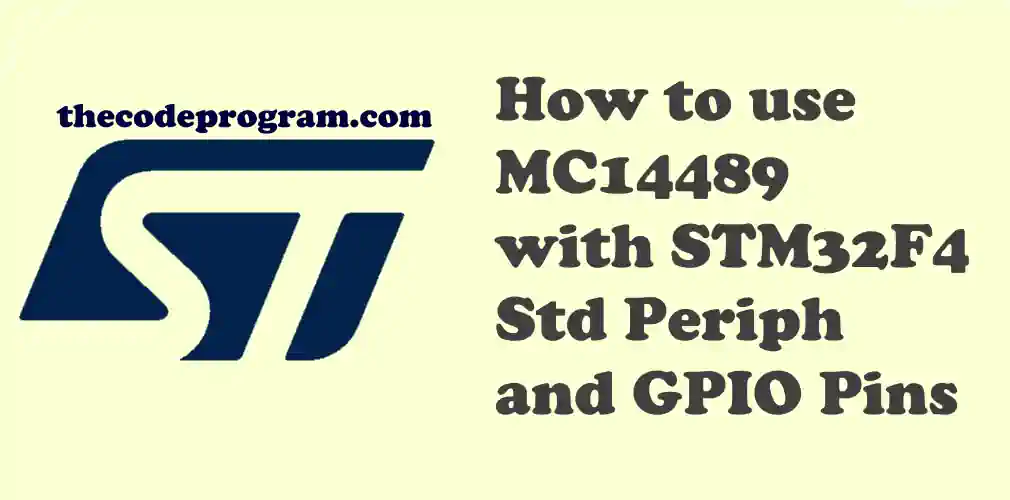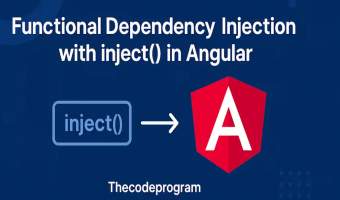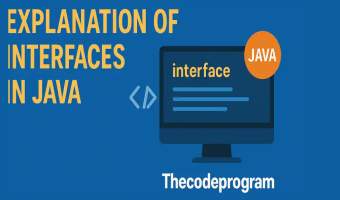How to use MC14489 with STM32F4 Std Periph and GPIO Pins

Let's Get Started.
Firstly, What is MC14489
MC14489 is a LED driver which can be interfaced directly diodes. We can drive 7 segment displays or variations of this. LED's must be connected as common cathode logic. We can control maximum 5 digits with one MC14489 micro controller. MC14489 can be interfaced with SPI communication protocol. It accepts 24-bit data. We send all 24 digits numbers in 24bit . We can also send the configuration data with 8-bits.
Important Note : I always recommend to read the datasheet firstly.
Now let's start coding.
uint32_t delay_counter;
unsigned char digits[5];
Now we need to write our essential method. This method will send the data to MC14489 over Soft SPI method. Below code block will open/close the clock pin and during this operation it will set the data pin according to data bit.
void write_MC14489( uint8_t digitData) {
int i=0;
int pinState;
GPIO_ResetBits(GPIOB, GPIO_Pin_13);
GPIO_ResetBits(GPIOB, GPIO_Pin_15);
for (i=7; i>=0; i--) {
GPIO_ResetBits(GPIOB, GPIO_Pin_13);
if ( digitData & (1<<i) ) {
GPIO_SetBits(GPIOB, GPIO_Pin_15);
}
else {
GPIO_ResetBits(GPIOB, GPIO_Pin_15);
}
GPIO_SetBits(GPIOB, GPIO_Pin_13);
GPIO_ResetBits(GPIOB, GPIO_Pin_15);
}
GPIO_ResetBits(GPIOB, GPIO_Pin_13);
}
void writeDigits(unsigned char digits[5])
{
GPIO_ResetBits(GPIOE, GPIO_Pin_7);
write_MC14489( (0xff << 4) | digits[3] ); // D23~D16
write_MC14489( (digits[4] << 4) | digits[2]); // D15~D8
write_MC14489( (digits[1] << 4) | digits[0] ); // D7~D0
GPIO_SetBits(GPIOE, GPIO_Pin_7);
}
void startDisplay()
{
GPIO_ResetBits(GPIOE, GPIO_Pin_7);
write_MC14489( 0x01);
GPIO_SetBits(GPIOE, GPIO_Pin_7);
}
void startCounter(){
for(int i=0; i<100000; i++){
digits[0] = i % 100000 /10000;
digits[1] = i % 10000 /1000;
digits[2] = i % 1000 /100;
digits[3] = i % 100 / 10 ;
digits[4] = i % 10 ;
writeDigits(digits);
delay_counter = 8000000;
while(delay_counter--);
}
}
int main()
{
RCC_AHB1PeriphClockCmd(RCC_AHB1Periph_GPIOB, ENABLE);
RCC_AHB1PeriphClockCmd(RCC_AHB1Periph_GPIOE, ENABLE);
GPIO_InitTypeDef GPIO_Structure;
GPIO_Structure.GPIO_Mode = GPIO_Mode_OUT;
GPIO_Structure.GPIO_Pin = GPIO_Pin_13 | GPIO_Pin_15;
GPIO_Structure.GPIO_OType = GPIO_OType_PP;
GPIO_Structure.GPIO_Speed = GPIO_Speed_25MHz;
GPIO_Init(GPIOB, &GPIO_Structure);
GPIO_Structure.GPIO_Mode = GPIO_Mode_OUT;
GPIO_Structure.GPIO_Pin = GPIO_Pin_7 | GPIO_Pin_8;
GPIO_Structure.GPIO_OType = GPIO_OType_PP;
GPIO_Structure.GPIO_PuPd = GPIO_PuPd_UP;
GPIO_Structure.GPIO_Speed = GPIO_Speed_25MHz;
GPIO_Init(GPIOE, &GPIO_Structure);
startDisplay();
while(1)
{
startCounter();
delay_counter = 65000;
while(delay_counter--);
}
}
Our program is ready now.
Example program is ready. You can see the working video on youtube: https://www.youtube.com/watch?v=VZ9MBTPulnI
That is all in this article.
You can reach the example code on Github via : https://github.com/thecodeprogram/TheSingleFiles/blob/master/STM32F4_MC14489_DisplayDriver.c
Burak Hamdi TUFAN












